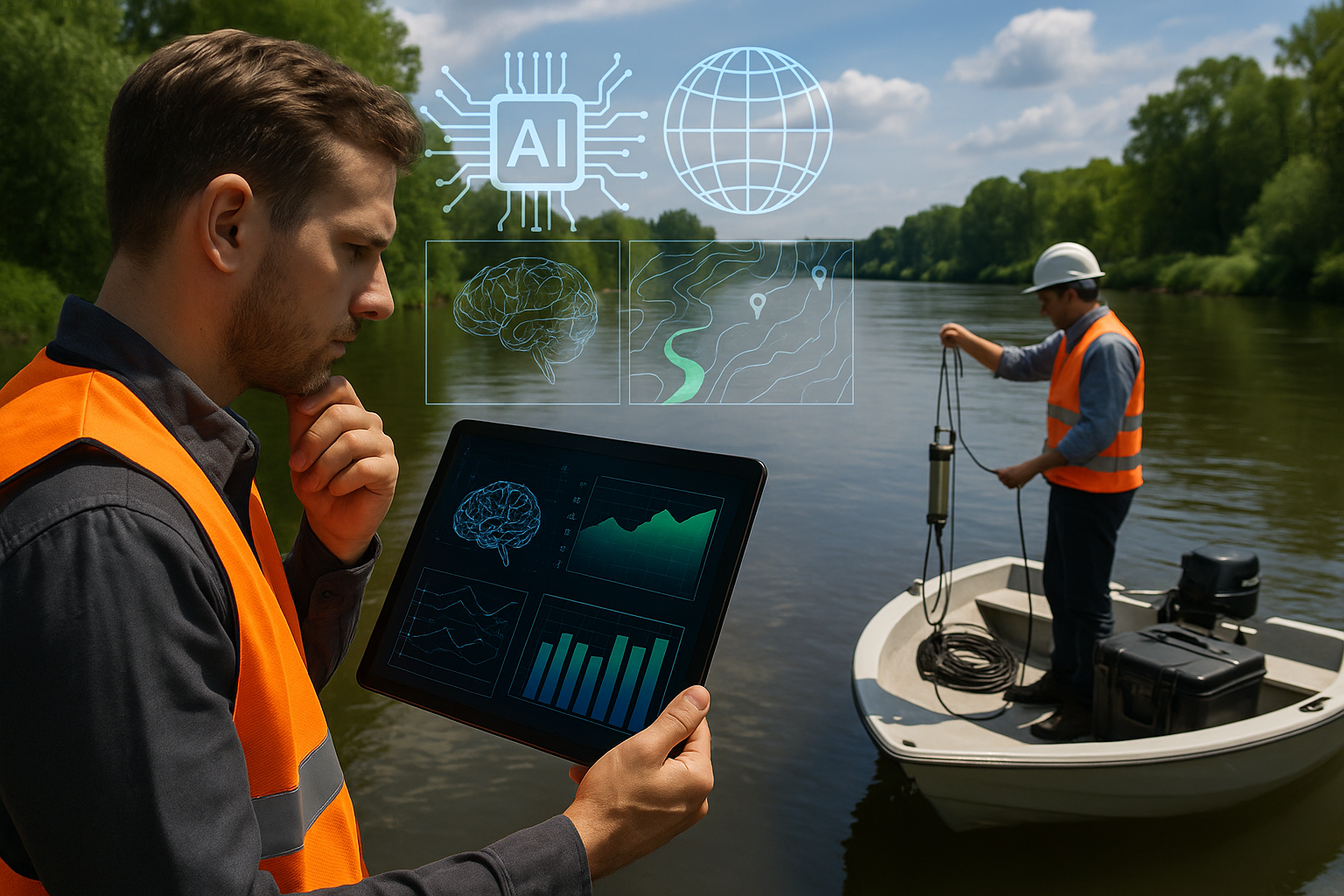Danube to Amazon: Next-Gen AI-based system flags river pollution in real time
There is also a pressing need for standardization and data harmonization. Without universally accepted protocols for AI modeling, GIS formats, or eDNA sequencing, interoperability between regions and institutions remains limited. The risk of fragmented data silos and inconsistent reporting could undermine the framework’s long-term effectiveness and scalability.

Researchers have introduced an innovative solution for real-time monitoring of freshwater ecosystems. This next-generation framework fuses artificial intelligence (AI), geographic information systems (GIS), and environmental DNA (eDNA) technologies that not only enhance environmental diagnostics but also reduce costs and expand access to ecological intelligence.
The researchers tested the system across four ecologically and geographically diverse river basins, including the Mississippi, Amazon, Yangtze, and Danube. The findings, published under the title "Next-Generation River Health Monitoring: Integrating AI, GIS, and eDNA for Real-Time and Biodiversity-Driven Assessment" in Hydrobiology, demonstrated dramatic improvements in predictive precision, species detection sensitivity, and pollution source mapping, setting a new benchmark for water quality and ecosystem assessment in the Anthropocene era.
How does the AI-GIS-eDNA framework enhance river monitoring?
Conventional river monitoring techniques often struggle with fragmented datasets, limited temporal resolution, and labor-intensive fieldwork. This new framework addresses these deficits by enabling continuous, scalable assessments grounded in real-time analytics. At the heart of the model lies a synergy between three core components:
- AI, which processes massive environmental datasets to detect anomalies, trends, and predictive patterns with up to 94% accuracy
- GIS, which provides spatial visualization and mapping of pollution hotspots with an 85–95% precision rate
- eDNA, which allows non-invasive species identification and biodiversity assessment with an 18–30% improvement over traditional biological sampling
Together, these tools enable decision-makers to obtain a granular, time-sensitive understanding of river ecosystems without relying solely on physical sampling or outdated chemical analysis. The system also reduces operational costs by up to 40%, making it a viable solution for developing regions or resource-constrained environmental agencies.
The model’s deployment in high-pressure river systems across continents provided a robust validation of its adaptability and performance. In each case, the framework successfully identified ecological stressors, mapped pollution trajectories, and provided actionable insights for policy interventions. This approach is particularly crucial as climate variability and urban expansion continue to intensify freshwater degradation worldwide.
What are the obstacles to full-scale implementation?
Despite its promising results, the integrated framework faces a host of regulatory and technical challenges that must be addressed before mainstream adoption. Chief among these is the lack of regulatory recognition for AI-driven and eDNA-derived indicators. Environmental monitoring laws in most countries still prioritize conventional metrics and sampling protocols, leaving no room for data generated from algorithmic models or molecular signatures.
There is also a pressing need for standardization and data harmonization. Without universally accepted protocols for AI modeling, GIS formats, or eDNA sequencing, interoperability between regions and institutions remains limited. The risk of fragmented data silos and inconsistent reporting could undermine the framework’s long-term effectiveness and scalability.
Another significant concern lies in the explainability of AI systems. The study urges investment in explainable AI (XAI) tools that make algorithmic outputs transparent and understandable for regulatory agencies, local authorities, and community stakeholders. Trust in AI-driven environmental decisions hinges on stakeholders’ ability to interpret and challenge automated assessments, especially when they form the basis for public health or land-use decisions.
In addition, digital infrastructure gaps continue to hinder the technology’s deployment in many low-income and rural areas. The absence of broadband connectivity, high-performance computing, and trained personnel could limit the real-time potential of this integrated system, particularly where it is needed most.
What policy shifts are required for broader adoption?
To translate technological success into environmental impact, the study recommends a comprehensive overhaul of environmental monitoring policy. First and foremost, governments must recognize AI and eDNA data as valid ecological indicators. Legal amendments to incorporate algorithmic predictions and genetic biomonitoring into official reporting systems would represent a significant step forward in modernizing environmental governance.
The researchers also call for cross-sector investment in data infrastructure and open-access platforms. By aligning data standards across academia, government, and industry, policymakers can enable seamless collaboration and information sharing. These reforms would facilitate coordinated responses to transboundary water pollution and improve ecological forecasting at regional and global scales.
Furthermore, the study highlights the need for capacity-building programs to train local authorities, citizen scientists, and researchers in AI, GIS, and eDNA technologies. This would help bridge the digital literacy gap and foster a more inclusive monitoring ecosystem. Ultimately, inclusive stakeholder engagement will be critical in building legitimacy and accountability into AI-augmented environmental decision-making.
By embedding these technologies into the core of river management systems, countries can move toward adaptive governance models that are responsive to change and rooted in evidence-based practices.
- FIRST PUBLISHED IN:
- Devdiscourse










